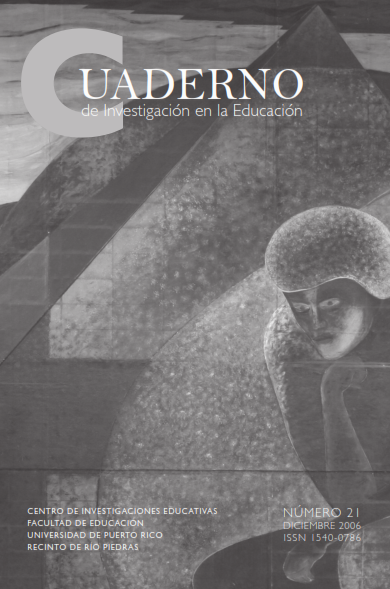Abstract
After a historical perspective of what integrated curriculum has meant, it follows an examination of its different aspects. Among these are: the reasons to adopt an integrated curricular model, the benefits derived from its adoption, investigations into its effectiveness, and implementation models. The article also explores the problems that may surge as a result of using this strategy, as well as the principles that should guide its implementation. Finally, teachers are exhorted to try the ten models presented by Fogarty (1991) and to select the one they feel more comfortable with to implement in their professional practice.
How to cite:
Ortiz-Hernández, E. (2006). Retos y perspectivas del currículo integrado. Cuaderno de Investigación en la Educación, 21, 35-56. Retrieved from https://revistas.upr.edu/index.php/educacion/article/view/13234
The contents published in the Puerto Rico Journal of Education is freely distributed under open access practices, in accordance with the Creative Commons license, Attribution-NonCommercial 4.0 International (CC BY-NC 4.0). Through these principles, the journal and its authors allow readers to access, reproduce and share articles in full text. Users should give credit to authors in a reasonable way without suggesting they have their support. Under no circumstances, readers may make use of the contents for commercial purposes. The authors retain copyright on their works.

